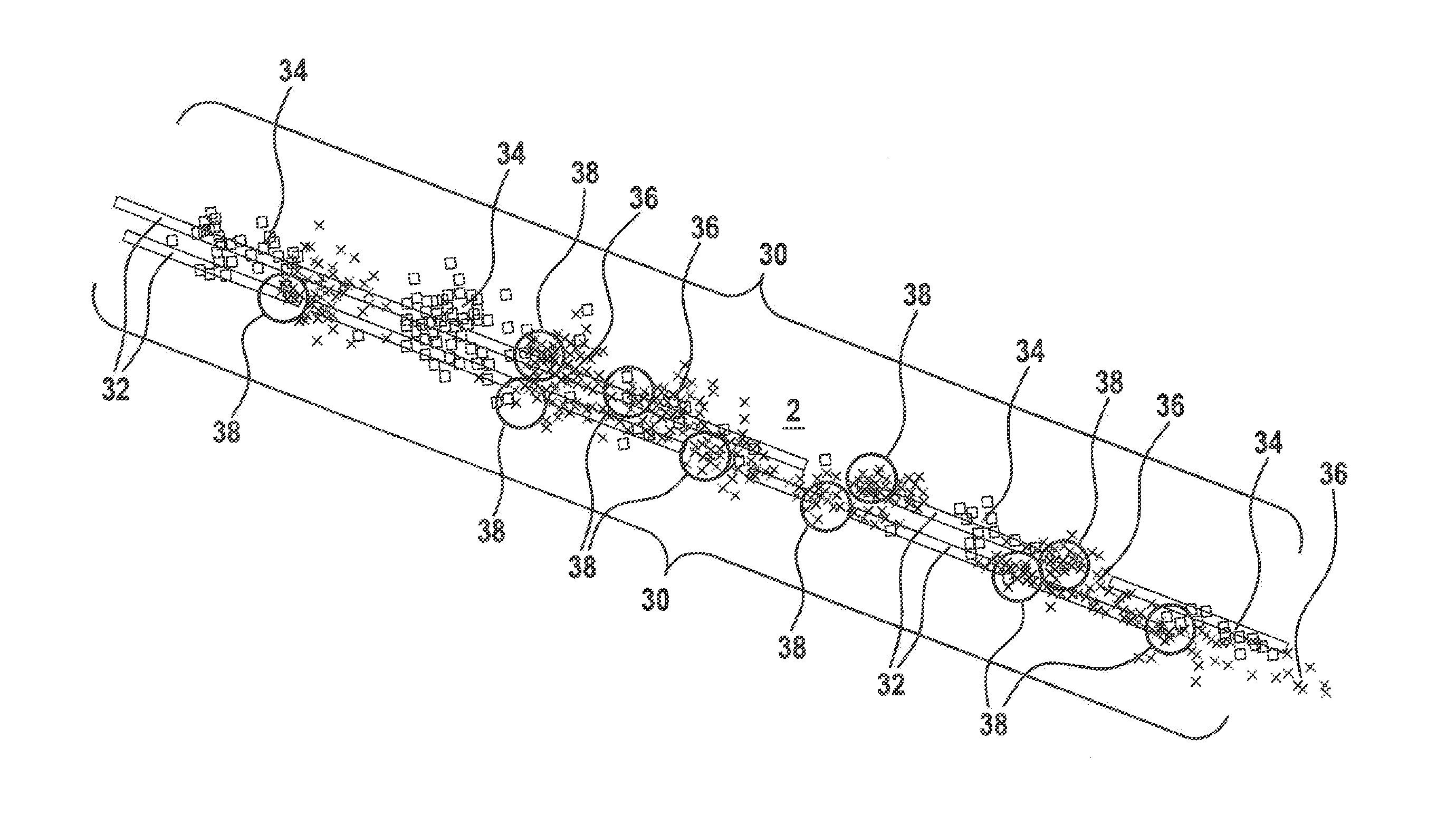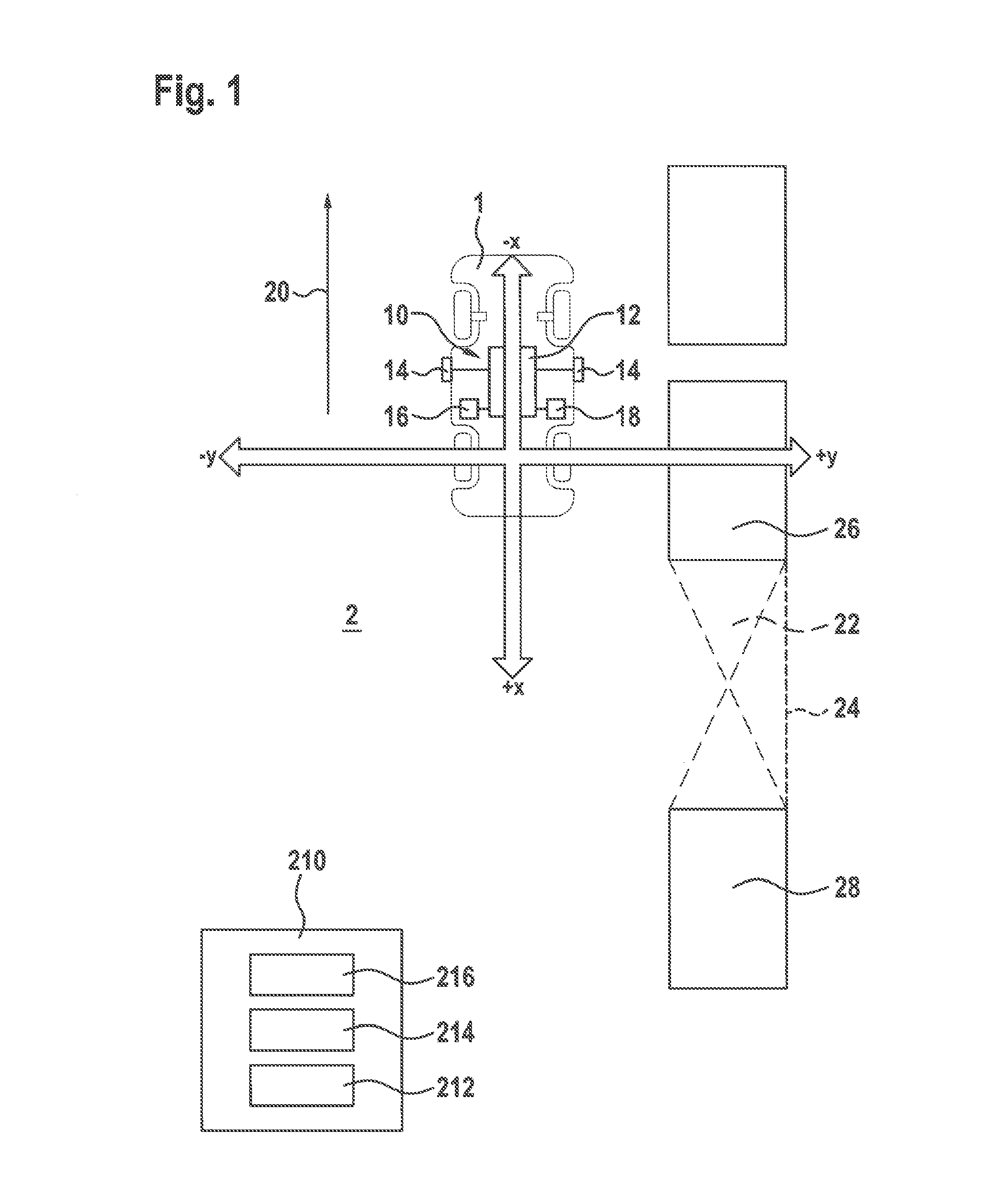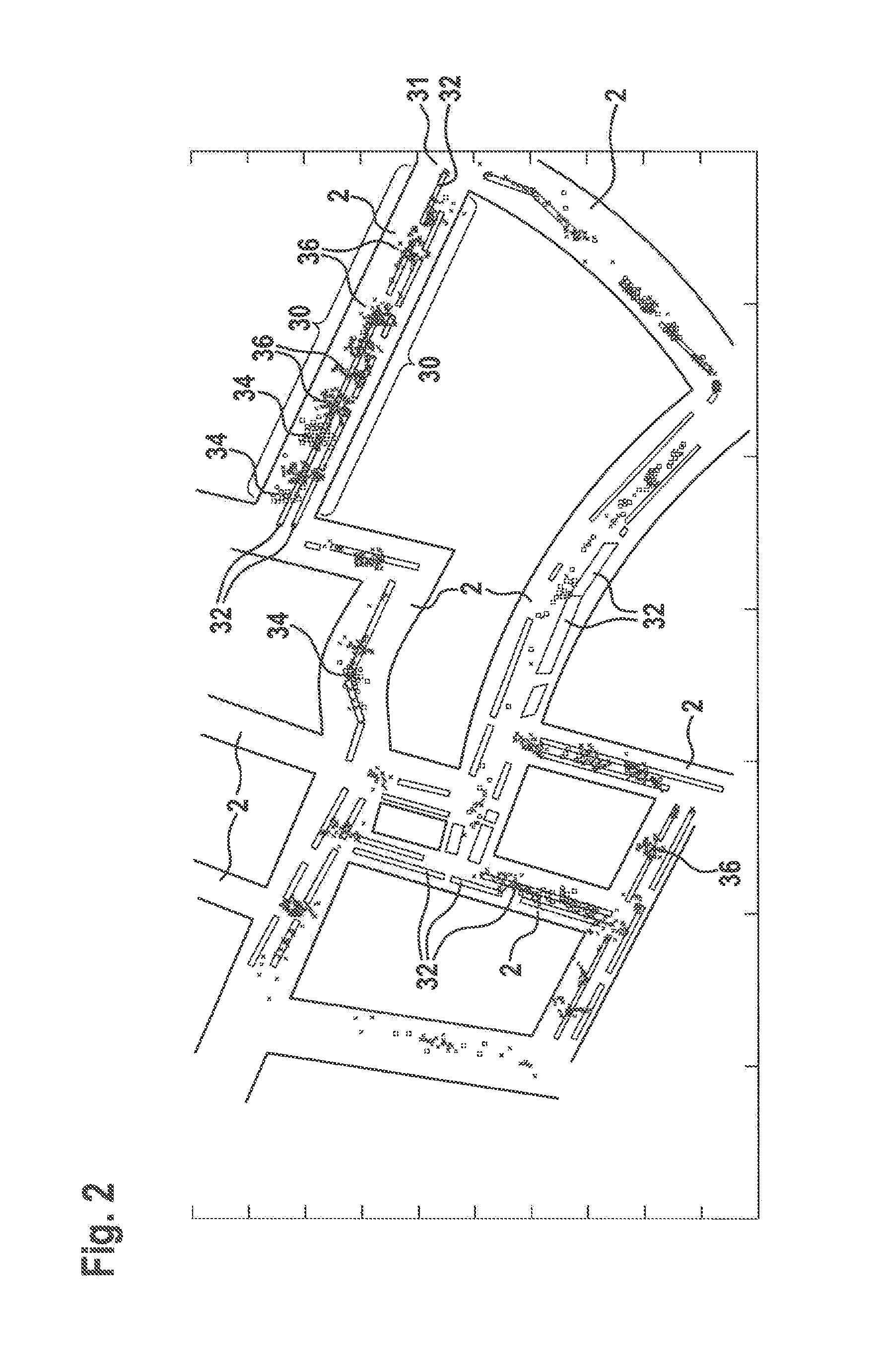Method for identifying parking areas and/or free spaces--
a technology for parking areas and free spaces, applied in the direction of indicating free spaces, road vehicle traffic control, instruments, etc., can solve the problem that they do not represent permissible parking areas, etc., and achieve the effect of short time, increased comfort, and improved efficiency
- Summary
- Abstract
- Description
- Claims
- Application Information
AI Technical Summary
Benefits of technology
Problems solved by technology
Method used
Image
Examples
Embodiment Construction
[0050]FIG. 1 shows a vehicle 1 which is moving along a street 2 in a driving direction 20. Vehicle 1 includes a device 10 for assisting the driver, which in turn includes surroundings sensors 14 for detecting possible parking spaces 22 in the surroundings of vehicle 1. Surroundings sensors 14 are configured as distance sensors in the specific embodiment illustrated in FIG. 1 and are oriented to the sides of vehicle 1, one surroundings sensor 14 each being situated on the left vehicle side and on the right vehicle side.
[0051]When vehicle 1 passes by possible parking space 22, a rear delimitation 28, a front delimitation 26 and a lateral delimitation 24 are ascertained via surroundings sensors 14. Delimitation 28 thus corresponds to the first reference object, delimitation 26 corresponds to the second reference object, and lateral delimitation 24 corresponds to the lateral reference.
[0052]In the specific embodiment of the method illustrated in FIG. 1, it is provided that the pieces of...
PUM
 Login to View More
Login to View More Abstract
Description
Claims
Application Information
 Login to View More
Login to View More - R&D
- Intellectual Property
- Life Sciences
- Materials
- Tech Scout
- Unparalleled Data Quality
- Higher Quality Content
- 60% Fewer Hallucinations
Browse by: Latest US Patents, China's latest patents, Technical Efficacy Thesaurus, Application Domain, Technology Topic, Popular Technical Reports.
© 2025 PatSnap. All rights reserved.Legal|Privacy policy|Modern Slavery Act Transparency Statement|Sitemap|About US| Contact US: help@patsnap.com



